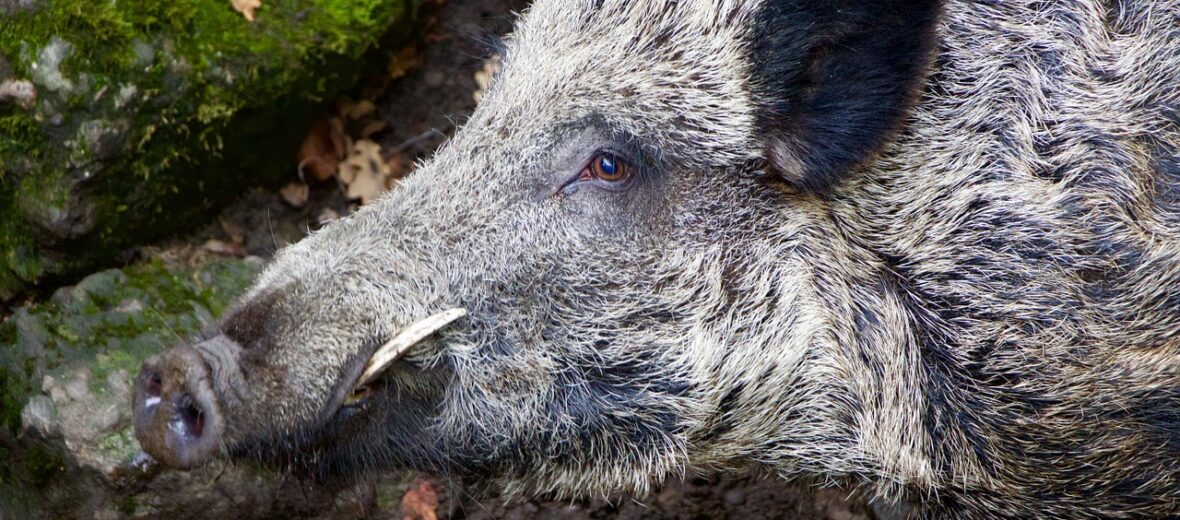
Found on multiple continents, the wild boar prefers grassy savanna areas, agricultural areas, wooded forests, shrublands, and marshy swamplands. There are 4 known subspecies of wild boar, pretty much differentiated by coloration. These critters are strong, fast, and eat pretty much anything. They also have an attitude. So give em room. Even though they suffer at the hands of habitat loss and are actively hunted, they are still listed as Least Concern by the IUCN. Their overall numbers are not known.
First the Stats…
Scientific name: Sus scrofa
Weight: Up to 220 lbs.
Height: Up to 31 inches
Length: Up to 59 inches
Lifespan: Up to 25+ years
Now on to the Facts!
1.) Both males and females have tusks. However, males have an additional pair of tusks though that are used to sharpen the lower ones. Tusks in males are also longer and curved.
2.) Being an omnivore (eats plant and animal matter), wild boars eat fruits, leaves, seeds, berries, eggs, mice, rats, lizards, amphibians, snakes, and worms. They will also eat trash and just about anything else they can get a hold of; including carrion (dead animals).
3.) They are nocturnal (active at night).
4.) Males are predominantly solitary, sans during mating season.
5.) Female boars congregate into what are called “sounders”. These are loose groups consisting of up to 30 females and their offspring.
But wait, there’s more on the wild boar!
6.) Their primary predators are: leopards, tigers, lynx, wolves, bears, bobcats, coyotes, cougars, and humans.
7.) Wild boars communicate via growls and squeals. They also use scent marking, via urine.
Did you know…?
Back in the day, their coarse hair was used as toothbrush filaments; till synthetic bristles were created.
8.) Mating season lasts from November – January.
9.) Breeding rights are established via fights between males. Injuries often occur.
10.) Females birth between 4 – 6 piglets.
But wait, there’s still more on the wild boar!
11.) Wild boars are polygynous (males mate with all the females in a sounder).
Did you know…?
The Wild Boar is the most widely distributed land mammal on Earth!
12.) Their elongated and elastic snouts are used to dig for roots, bulbs, and tubers.
13.) They have poor eyesight, but excellent smell and hearing.
14.) Due to the fact that they have short legs and can’t traverse in snowy environments, they typically aren’t seen in snowy climates.
Now a Short Wild Boar Video!
Also, check out the Critter Science YouTube channel. Videos added frequently!
Want to suggest a critter for me to write about? Let me know here.



